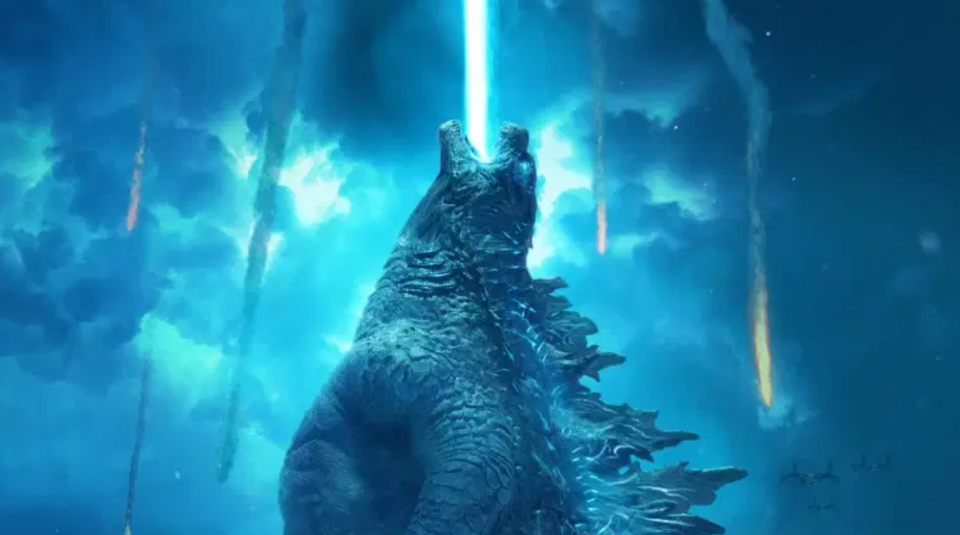The Godzilla science guide you didn't know you needed

Caution: Insofar as fictitious science facts about Kaiju are spoilers, this post contains mild spoilers for The Kaiju Preservation Society.
Countless monster stories have concluded that the real monsters are humans, but precious few delve deeply into the identity of the monsters themselves. John Scalzi's lighthearted new monster novel The Kaiju Preservation Society is one of them. If you're a hardcore Godzilla fan, you may think you already possess an encyclopedic knowledge of Kaiju — those giant, unearthly beasts of Japanese action flick fame. But after acknolwedging the humans-are-the-real-monsters trope in the first act, Scalzi moves on into the largely uncharted territory of Kaiju biology, giving these lizard-like titans new depth in the process.
He does so through the titular KPS, a top-secret, multinational organization of scientists, ex-military personnel, and jobless millennials with masters' degrees in science fiction. Its mission: Studying Kaiju in their native habitat, a parallel Earth with a Carboniferous-like climate, preventing the colossal creatures from crossing over into our world, and helping preserve the species. While the The Kaiju Preservation Society is more science fan service than hard science fiction (there are few Godzilla-sized plot holes when it comes to both biology and the multiverse) the novel does an impressive job exploring some key ecological concepts through skyscraper-sized dinosaur doppelgangers.
Take, for example, one of Godzilla's most striking attributes: His atomic breath. While Scalzi would have been forgiven if he'd avoided trying to fit a scientific explanation to something so unnatural, instead he creates a world in which atomic breath is a natural consequence of biogeochemistry. Kaiju Earth, we learn, contains a higher percentage of the radioactive actinide elements like uranium and thorium — and life has evolved to use them. The Kaiju themselves produce most of their energy internally, from nuclear reactors they grow inside their bodies that are maintained via a complex cooling system involving dog-sized skin parasites.
Spewing atomic energy out of their mouths in an uncontrolled fashion, or "venting" as KPS scientists call it, is a sign of some sort of instability within the Kaiju reactor. Left untreated, venting causes Kaiju to explode, releasing the energy of a small nuclear weapon. But as violently destructive as the Kaiju life cycle sounds, these thermonuclear deaths actually play a critical role in the larger ecosystem, creating hotspots of radioactive energy that the planet's myriad other radiation-adapted life forms — a bestiary of horrors that includes football-sized flying insects and venemous tree crabs — flock to in a feeding frenzy. A dead Kaiju, as one scientist remarks, is not unlike a whalefall, a whale carcass that nourishes the seafloor after creating a small crater of destruction wherever it lands.
The essential ecological role Kaiju play within the nightmare swamp they call home is further illustrated by those giant skin parasites. As noted, Kaiju create most of their energy internally via nuclear fission — a process (very) loosely analagous to how plants produce their own carbon-based fuels via photosynthesis. But (to push the giant plant analogy a bit further) Kaiju also require nutrients from their environment, which they obtain symbiotically. Just as the fungi that colonize plant roots help Earth's photosynthesizers mine nitrogen and various trace metals from the soil, a Kaiju's skin parasites will leave its host to snack on alien insects and frog-analogs, returning full of tasty nutrients that it exchanges for a warm home. As alien as it sounds, the Kaiju-parasite relationship illustrates a symbiosis that's baked into the very foundation of Earth's ecology.
Other aspects of Kaiju biology and their supersized biosphere are a bit more hand wavy. For all the pages PhD-toting members of the KPS spend puzzling over how Kaiju can actually grow to such mountainous proportions, the book never really offers an explanation. (We are told, accurately and repeatedly, that the collosal size of Kaiju makes no sense because of the square-cube law that volume increases faster than surface area. This creates a host of challenges for large animals when it comes to temperature regulation, oxygen circulation and more.) And I personally didn't find the book's explanation for how Kaiju are able to cross the interdimensional barrier into our Earth particularly satisfying. Considering how wildly improbable the idea of such multiverse mashups is in the first place, Scalzi might as well have just called this part Godzilla magic and been done with it.
Those quibbles aside, hey, somebody wrote a book about Kaiju biology! And in addition to being thoroughly entertaining, the scientific concepts are pretty clever. Godzilla may never make sense on Earth, but on radioactive Kaiju Earth with its hothouse climate, thick atmosphere, and jungles of oversized nightmare bugs, I can almost see him fitting in.